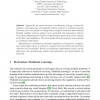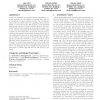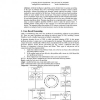66 search results - page 12 / 14 » Making use of population information in evolutionary artific... |
ECAL
2005
Springer
14 years 1 months ago
2005
Springer
Abstract. Inspired by the recent advances in evolutionary biology, we have developed a self-organising, self-adaptable cellular system for multitask learning. The main aim of our p...
KDD
2004
ACM
14 years 8 months ago
2004
ACM
In order to effectively use machine learning algorithms, e.g., neural networks, for the analysis of survival data, the correct treatment of censored data is crucial. The concordan...
ACTAC
2006
13 years 7 months ago
2006
In this paper we introduce a statistical Named Entity recognizer (NER) system for the Hungarian language. We examined three methods for identifying and disambiguating proper nouns...
PAKDD
2000
ACM
13 years 11 months ago
2000
ACM
Combining multiple global models (e.g. back-propagation based neural networks) is an effective technique for improving classification accuracy by reducing a variance through manipu...
KES
2004
Springer
14 years 29 days ago
2004
Springer
Artificial Intelligence algorithms can be divided into two groups according to the type of problems they solve. Knowledge-intensive domains contain explicit knowledge, whereas know...



